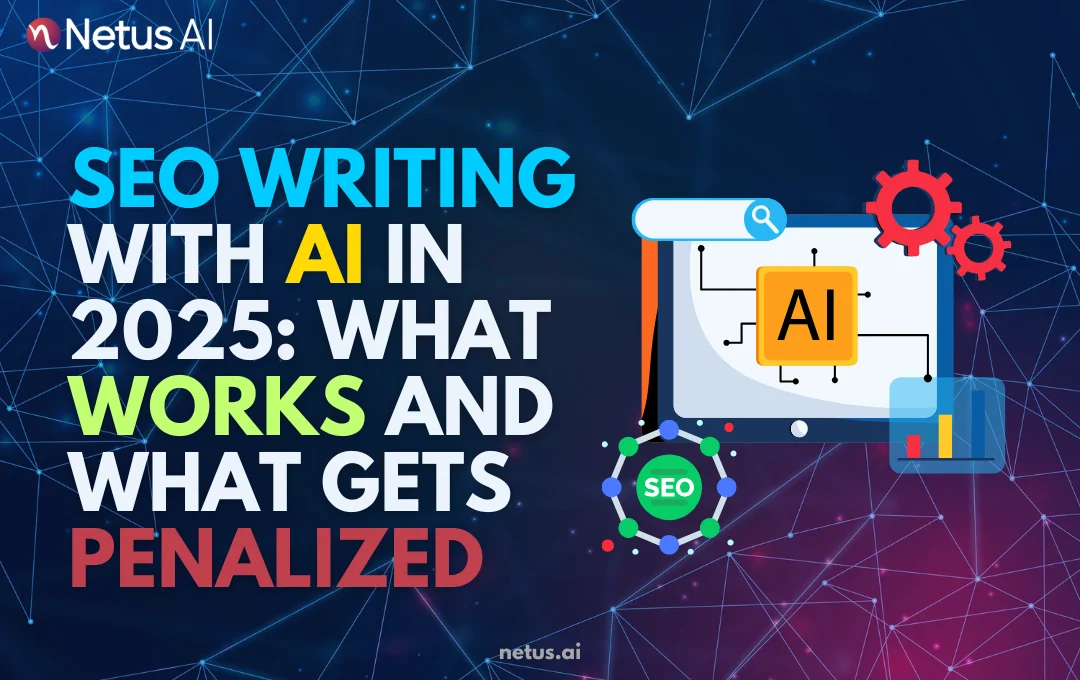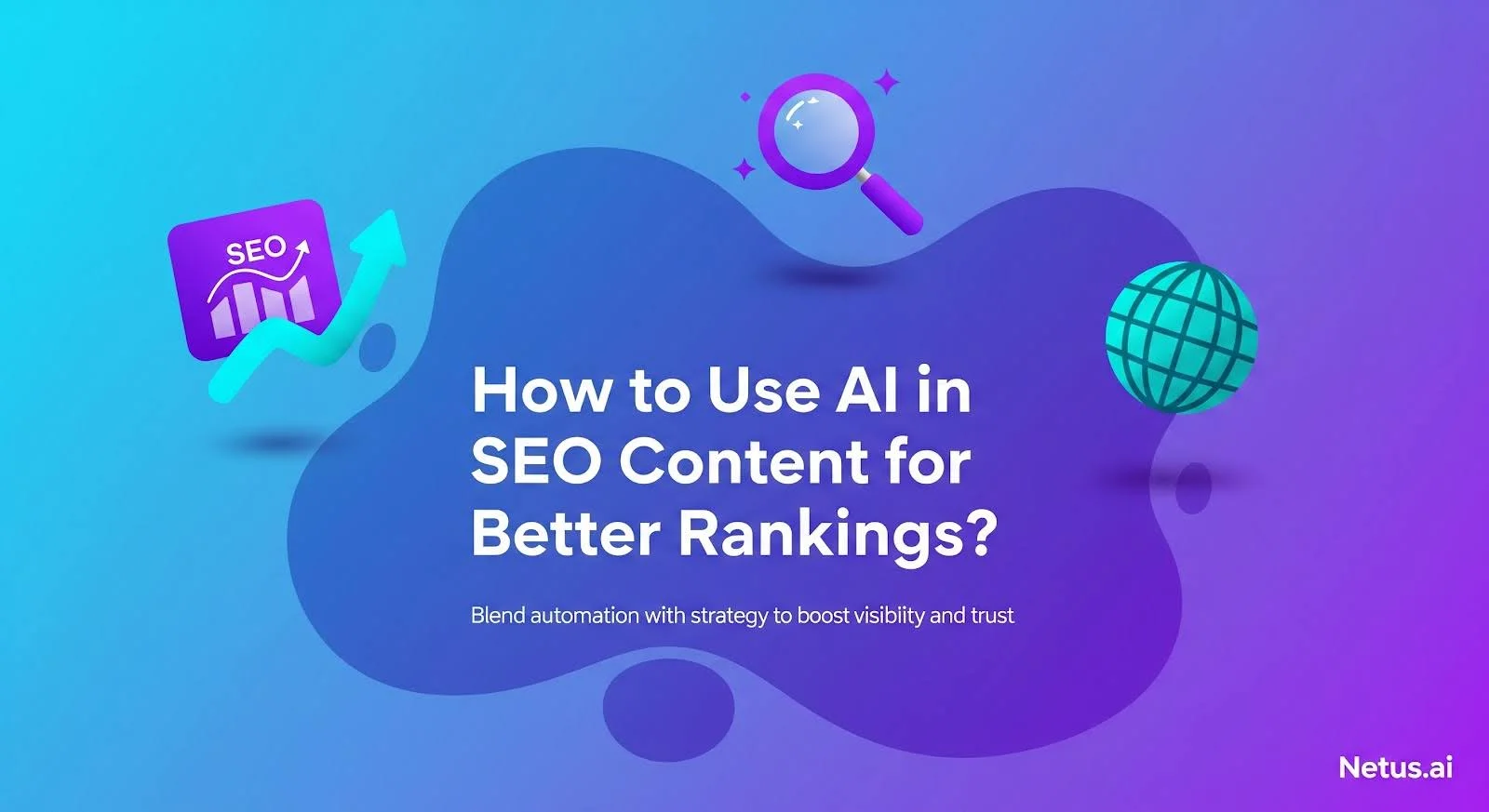Eight best practices for content SEO
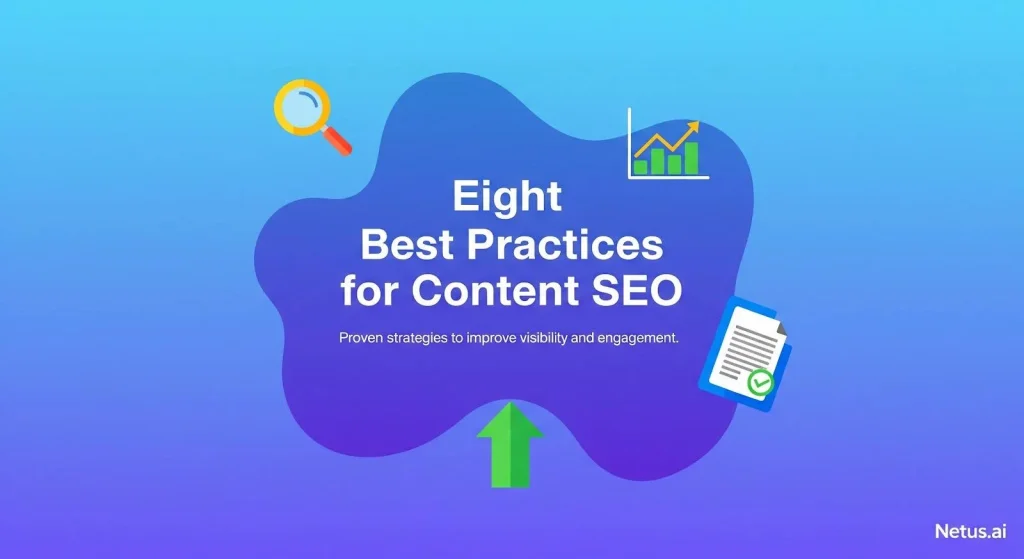
Content has to show up and grab attention if it wants to do well. Content SEO takes care of that by tuning things up for search engines. You handle the structure, the writing, and the final touches.
That covers stuff like digging into keywords, drawing in users, and fixing up the page details. It all leads to better spots in results and more steady visitors.
This guide lays out eight key ways to make articles that pack a punch and work with searches.
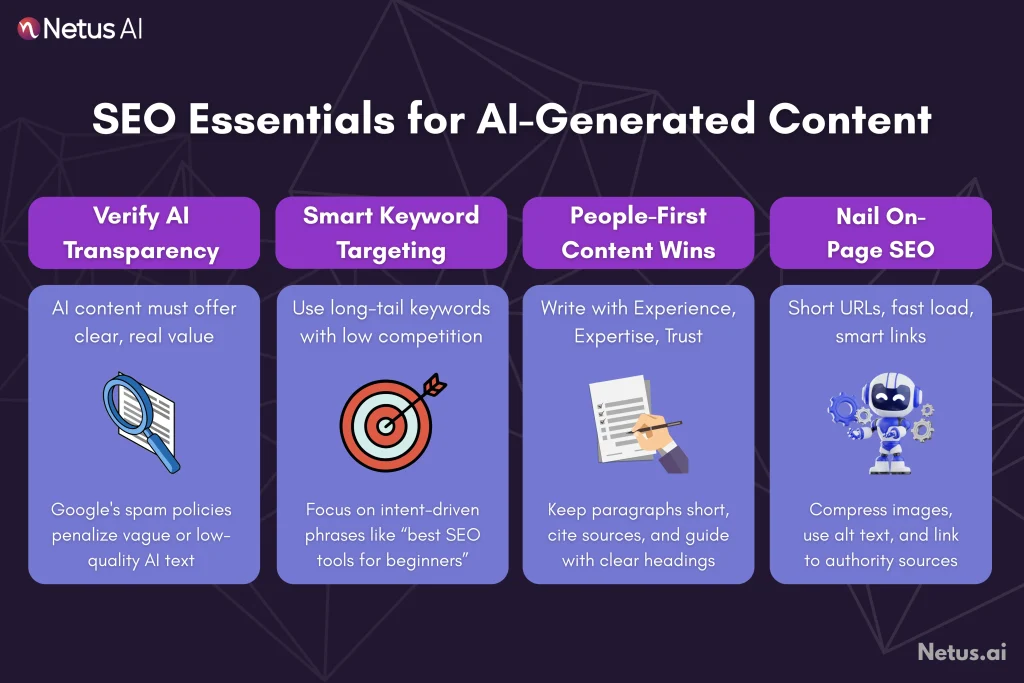
1. Ensure transparency and verify AI-generated content

Google now deems AI content lacking distinct value as lowest quality, potentially penalizing it per spam policies.
Detecting AI content is crucial for SEO.
2. Keyword optimization and research

When it comes to SEO for your content, aim for long-tail keywords that pull in plenty of traffic while facing little competition.
Tools like Ahrefs or SEMrush can help you spot those opportunities pretty easily. Stick with specific phrases such as “best SEO practices for beginners” over vague terms like “SEO”.
This approach lets you climb higher in rankings for targeted searches. Make sure to work your main keyword smoothly into the title, headings, and those first hundred words.
Steer clear of overdoing it with keyword stuffing though.
3. Developing engaging and high-quality content

Effective content SEO really puts people first. It focuses on conversions too. This approach helps drive high rankings and better engagement.
You do it by meeting Google’s E-E-A-T standards. Those stand for Experience, Expertise, Authenticity, and Trustworthiness. Some key practices stand out here. You create original content that goes in depth.
Make sure it is well-researched as well. Cite reputable sources to build credibility. Then improve readability in simple ways. Use concise paragraphs for that. Add lists and bullet points where they fit.
Include H2 through H4 subheadings to guide readers.
4. Search Engine Optimization: On-page strategies

Optimize pages for organic ranking with on-page SEO:
Use short, descriptive URLs (e.g., “/content-seo-guide”); enhance navigation with internal links and descriptive anchor text; cite authoritative external sources that open in a new tab; and improve speed and accessibility by optimizing images with descriptive file names, alt text, and compression.
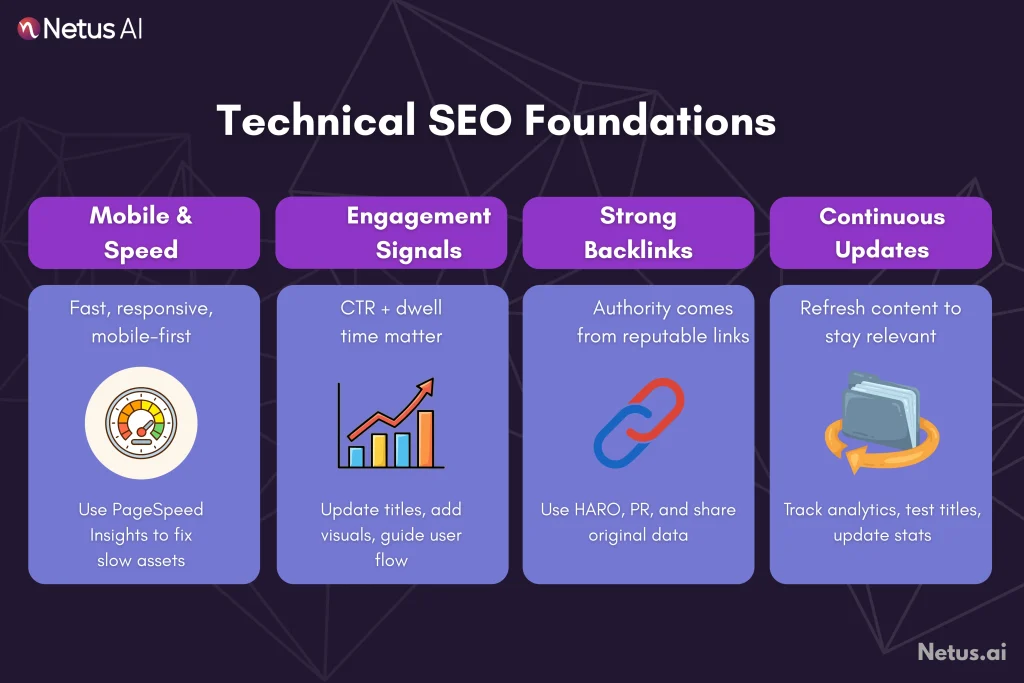
5. Key technical SEO considerations
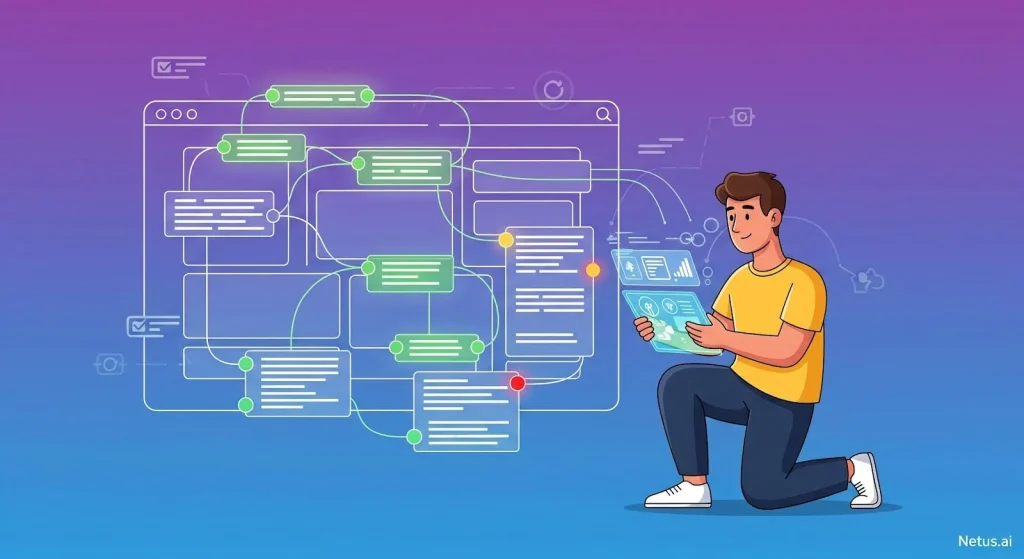
To optimize your site for technical SEO, focus on mobile optimization by ensuring fast loading times and a responsive design that adapts to all screen sizes.
Utilize Google’s page speed insights to identify and resolve elements that slow down your site. Enhance search engine visibility with schema markup, using structured data like “How-to” and “FAQ” Schema.
Finally, ensure Googlebot can crawl your site by using HTTPS and optimizing sitemaps for improved indexing.
6. Key Metrics: User engagement and social signals

User engagement, click-through rate (CTR), and social signals are key indicators of successful SEO content performance.
CTR optimization
Use engaging headlines that accurately reflect the article’s content (e.g., “8 Content SEO Best Practices”). If your title includes a date, update it when you refresh the content to maintain relevance and boost click-through rates.
Boost dwell time
Dwell time is a key metric for understanding how long users typically spend on a page. To increase engagement, incorporate interactive elements such as videos and images. Additionally, use clear calls-to-action to guide users to other relevant articles or tools for further information.
7. Off-page SEO and link building

To improve your website’s authority within Google’s E-E-A-T algorithm, link building is an effective strategy.
Acquiring backlinks from reputable sources is crucial, but like any optimization effort, it requires careful and deliberate execution.
Backlinks
Gain backlinks by creating valuable content, especially original research. Share findings via HARO, digital PR, and social media (Facebook, LinkedIn), while adhering to Google’s link policies.
8. Ongoing content updates and oversight

Content SEO is not a one-time task to be completed and then forgotten. Instead, it’s an ongoing process that requires continuous effort and optimization, much like other SEO strategies.
Track performance
Utilize complimentary tools such as Google Analytics and Google Search Console to consistently monitor your content’s performance. Keep track of metrics like:
- Traffic trends
- Click-Through Rates (CTR)
- Bounce rates
- Keyword rankings
Split testing for SEO
A/B testing in SEO involves testing different titles, meta descriptions, and layouts to find the best performers.
Regular content updates are essential
Remember to consistently revisit, refresh, and enhance your existing content. Update any outdated statistics and trends (and clearly indicate the current year of update in the site’s title!).
You might also need to incorporate new sections or assess its readability to ensure the content remains easily comprehensible.
Content starts at generation: NetusAI’s SEO article writer and content generator
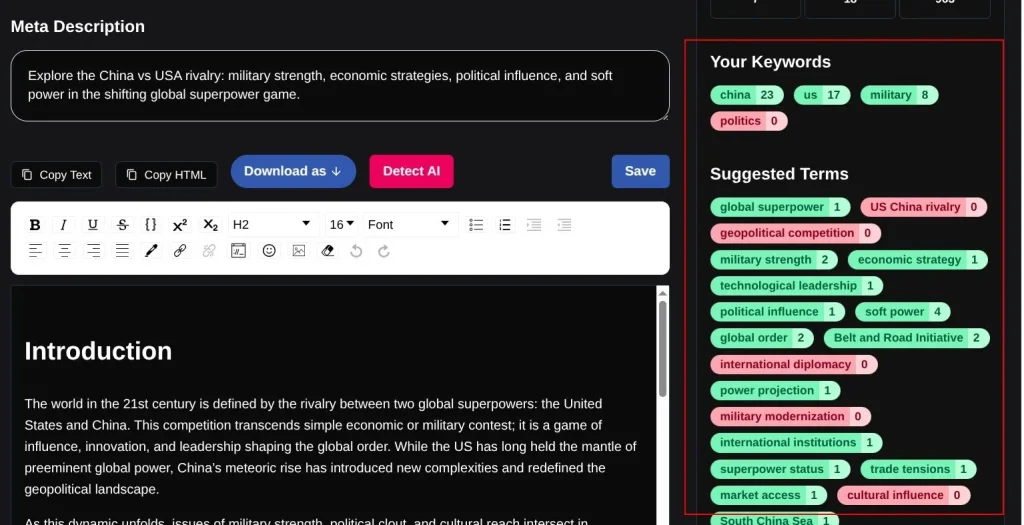
Avoiding stylometry and detection issues shouldn’t begin after content is written, it should start with the writing itself. That’s where NetusAI steps in.
The NetusAI SEO article generator creates SEO-optimized blog posts, unlike generic AI tools producing easily flagged content. Unlike generic tools, it goes beyond simple drafting. It:
- Lets you input headlines and targeted SEO keywords
- Supports long-form templates for full blogs
- Auto-generates a structure with Title → Outline → Content
- Works in multiple languages for global teams
It connects directly to the Netus AI Bypasser + Detector system, ensuring your output is readable and avoids detection.
Unified platform for marketers, freelancers and bloggers to generate, review and rewrite AI content that sounds human.
Content generator
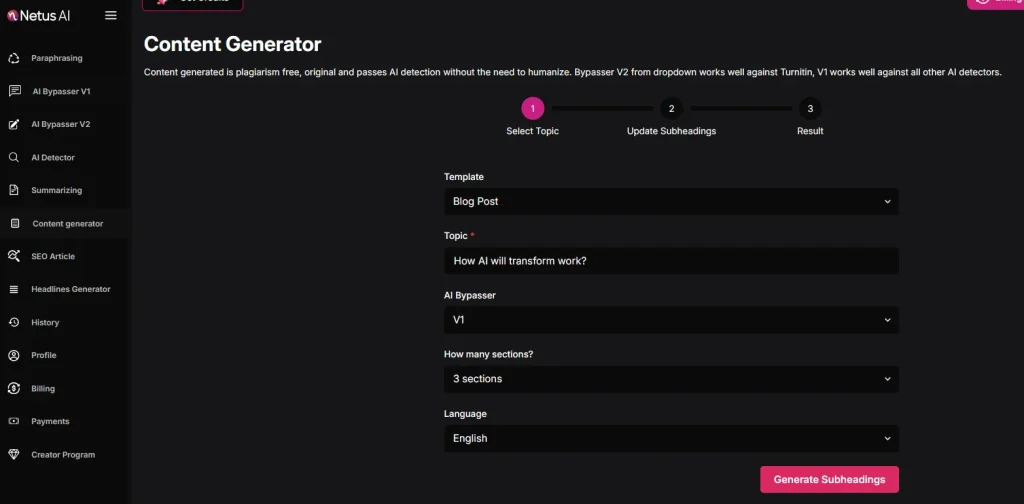
NetusAI offers a content generator that produces plagiarism-free content. Users can generate, download, copy and view their content history on the user-friendly NetusAI page.
NetusAI efficiently rewrites and generates high-quality, SEO-optimized articles from scratch or existing ideas, saving time without compromising trust.
Final thoughts
The thing is, making content SEO work well really depends on taking a full, rounded approach. You need to stick with those eight best practices over time. That means using AI for content in an ethical way. It also involves smart keyword choices.
It’s clear that NetusAI’s tools are designed to streamline content SEO efforts from the start, tackling the modern challenge of AI-generated content quality. Specifically, the NetusAI SEO article generator and content generator help users create search-engine-optimized, high-quality, and unique content.
By integrating with its Bypasser + Detector system, NetusAI ensures that the output is readable and avoids detection, thereby supporting ethical AI use while driving better organic rankings and traffic.
FAQs
Google looks at AI content that does not bring any real unique value as the lowest tier stuff out there. They could slap penalties on it under their spam guidelines. Spotting that kind of AI material turns out to be key for anyone handling SEO.
Google puts a lot of weight on EEAT for how things rank in organic search. That covers experience, expertise, authenticity, and trustworthiness. Content really needs to come across as original. It should show solid research behind it. The depth has to be there too.
On page strategies cover a few key things. You can use short URLs that describe what the page is about.
The NetusAI SEO article generator puts together blog posts that are fully optimized for search engines. It lets you enter headlines along with the specific SEO keywords you want to focus on. This tool supports templates for longer pieces of writing. It even creates a basic structure on its own without much hassle. You can use it in various languages to fit different needs.
NetusAI has a content generator tool. It creates articles that stay free from plagiarism and deliver high quality. These pieces get optimized for SEO too. You can build them from scratch or pull in your own existing ideas. The setup lets users generate new content right there. They can download files easily. Copy options work without hassle. Plus, everyone gets to view their full content history. All of this happens on a page that feels pretty user-friendly.


